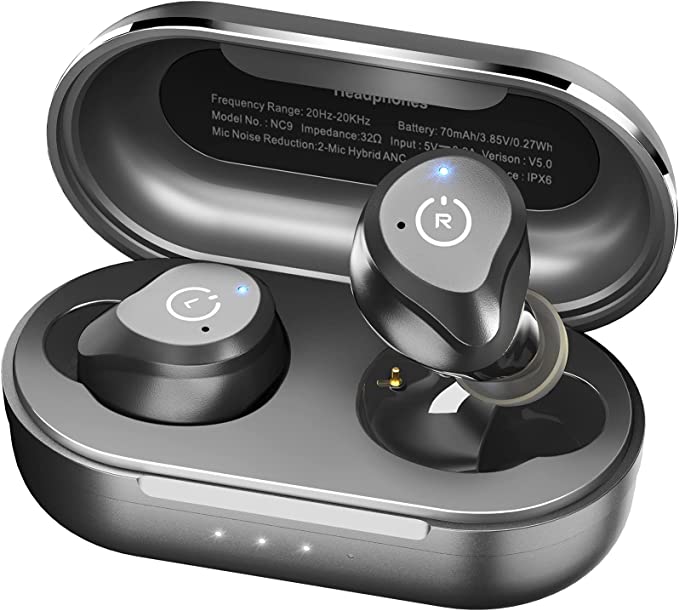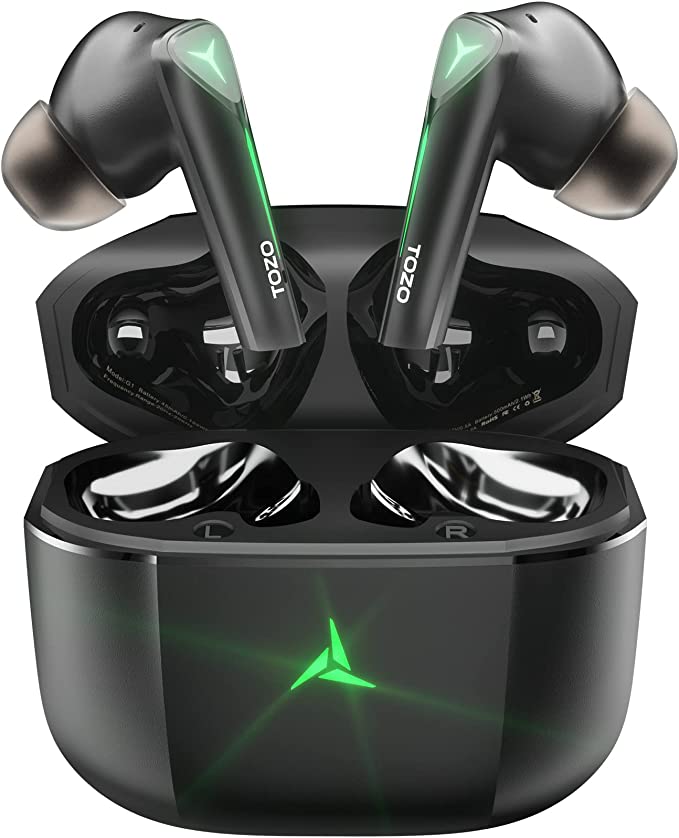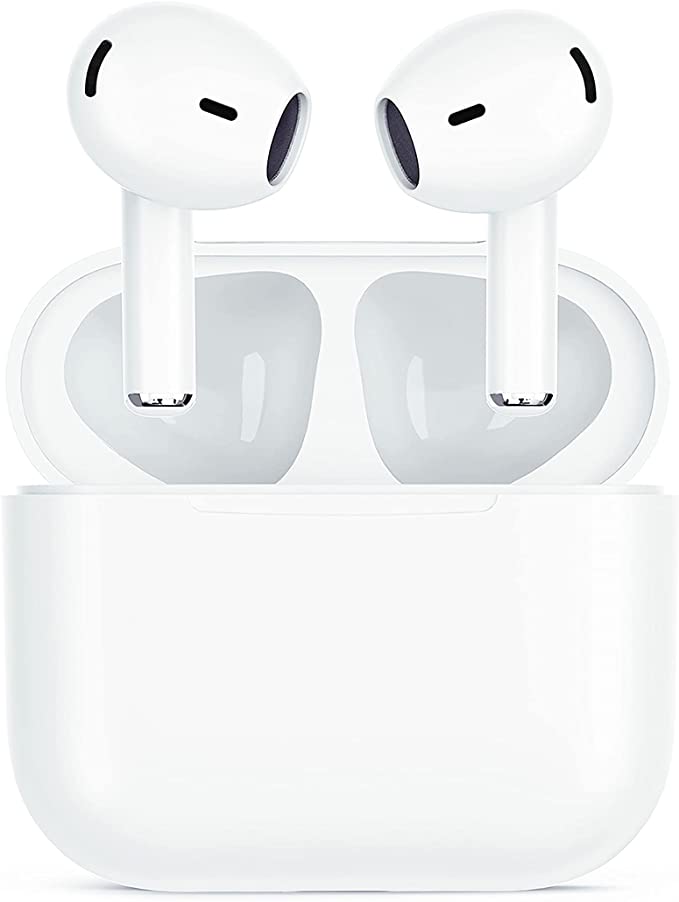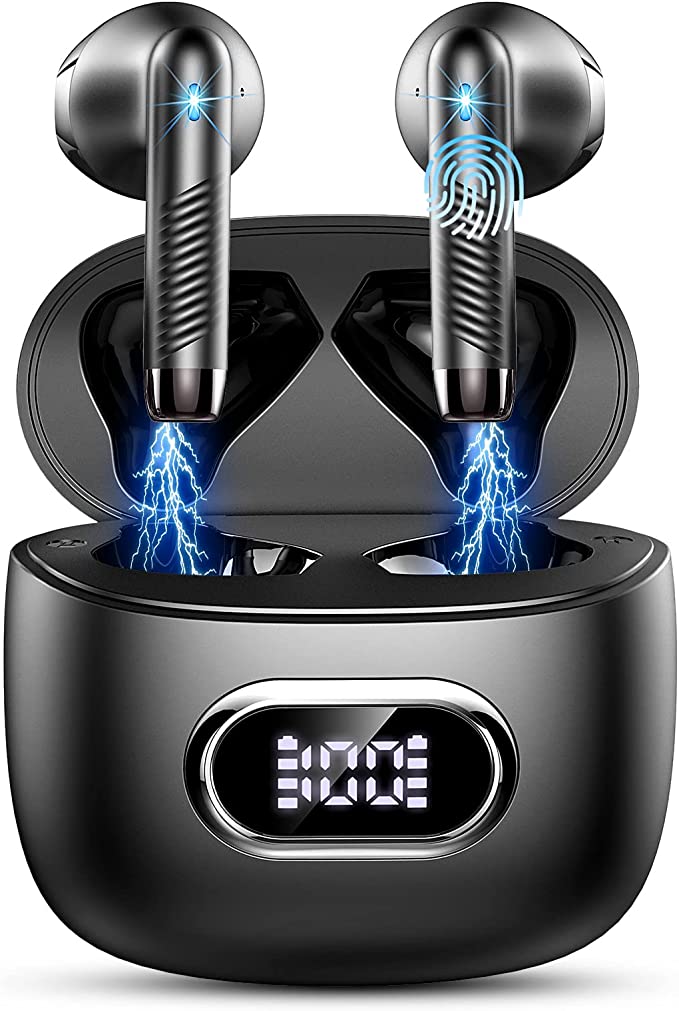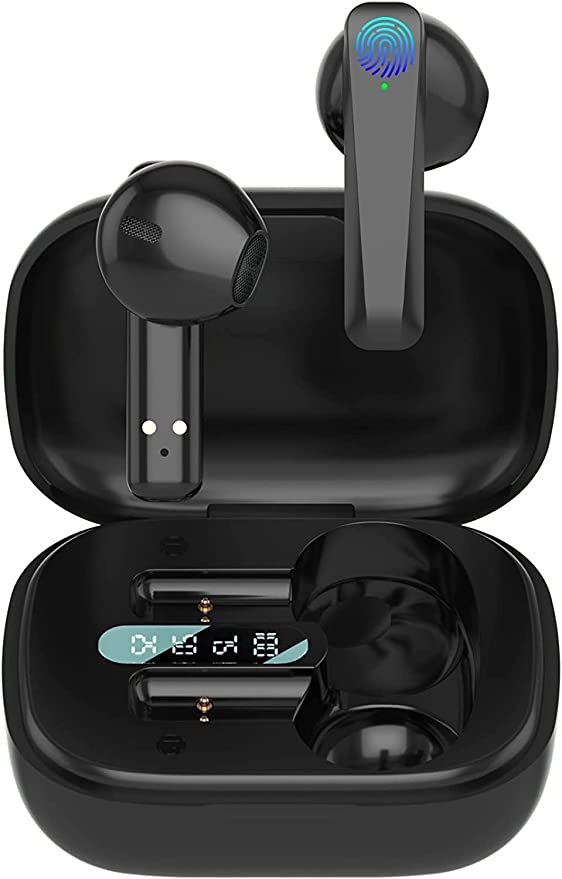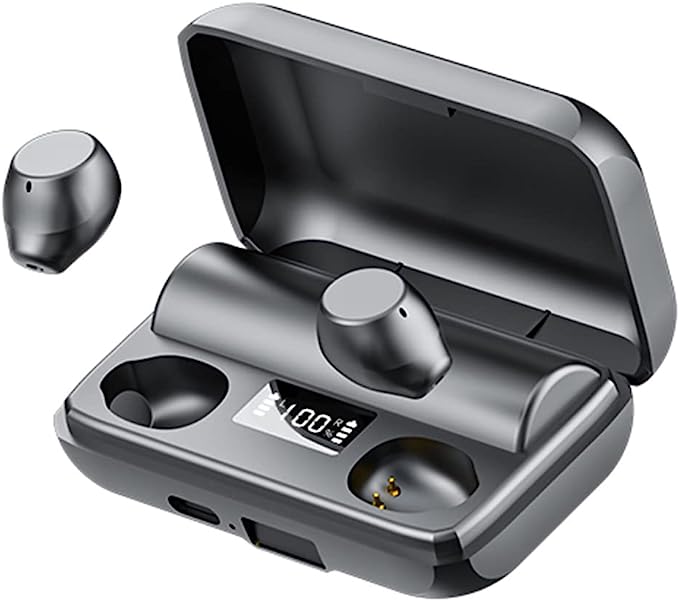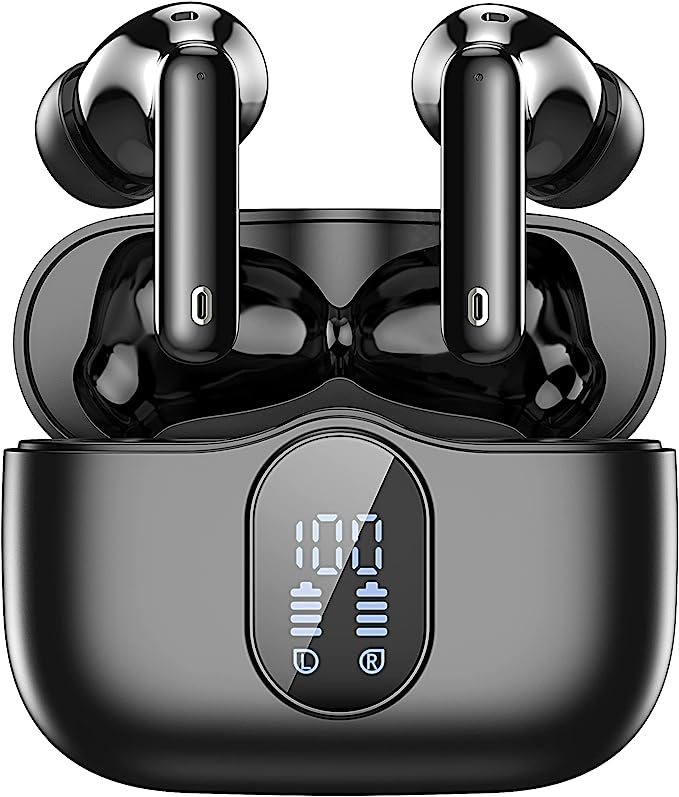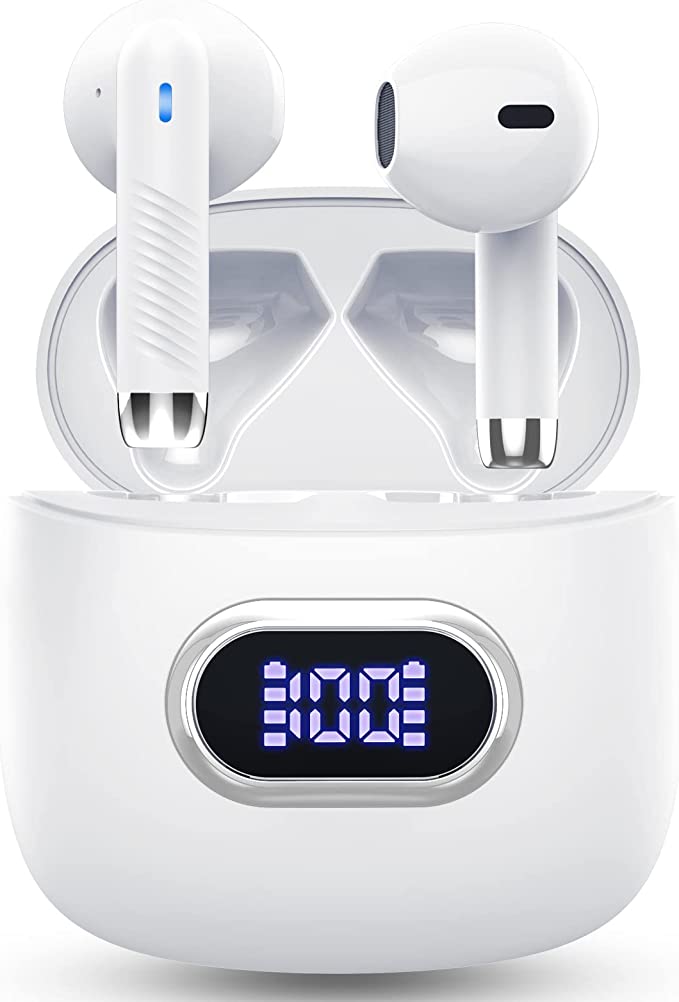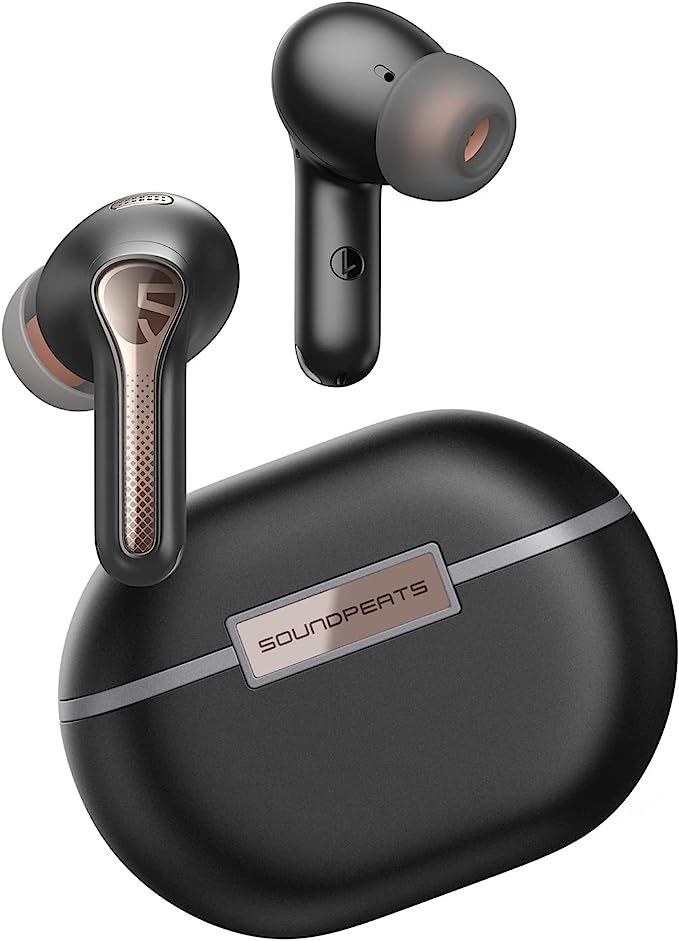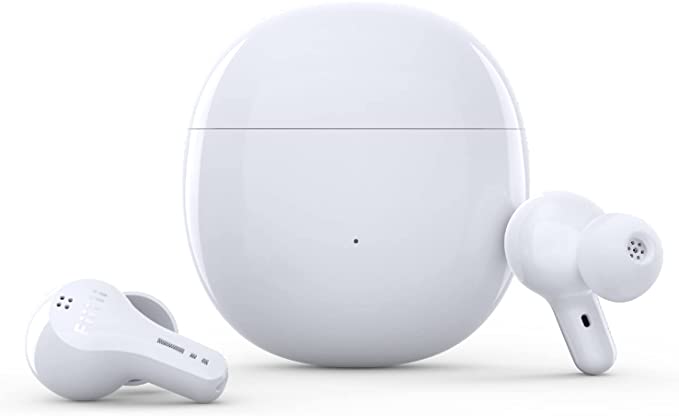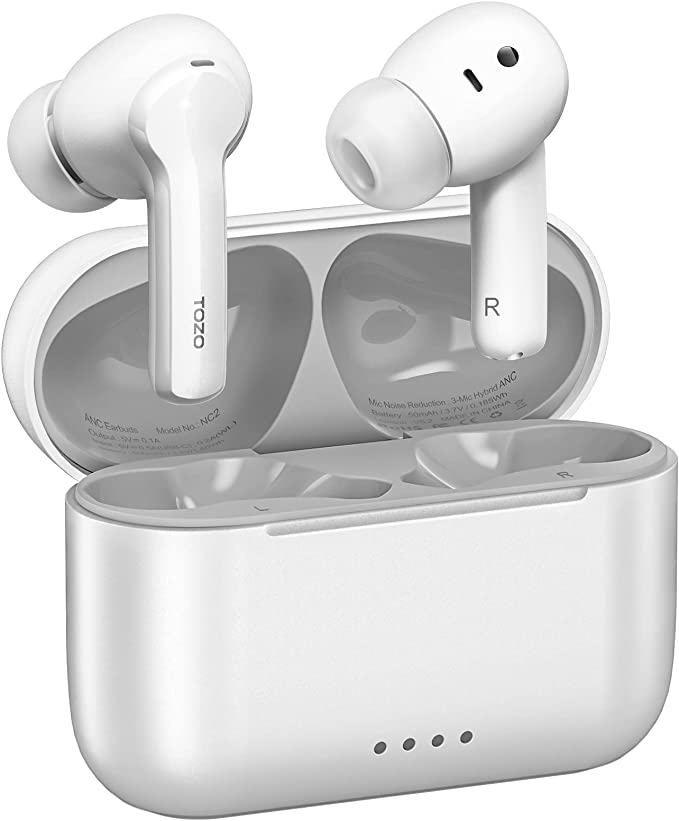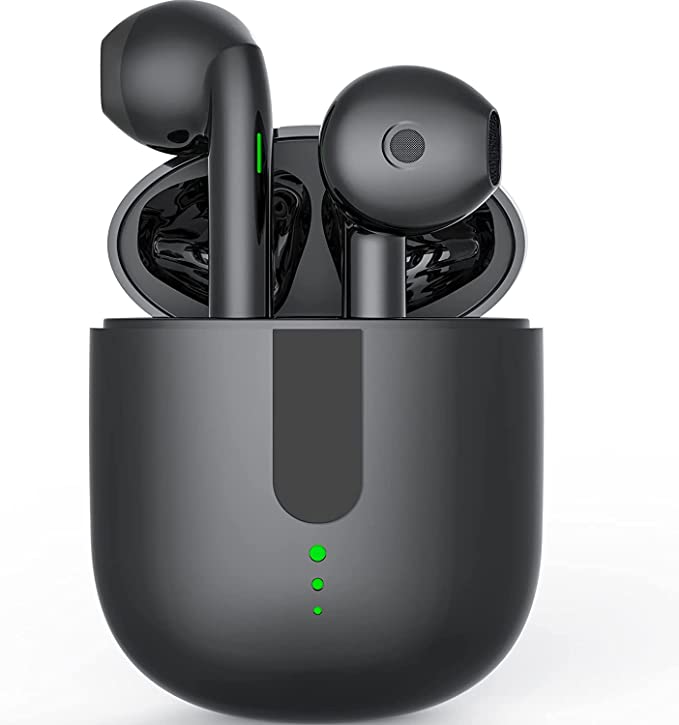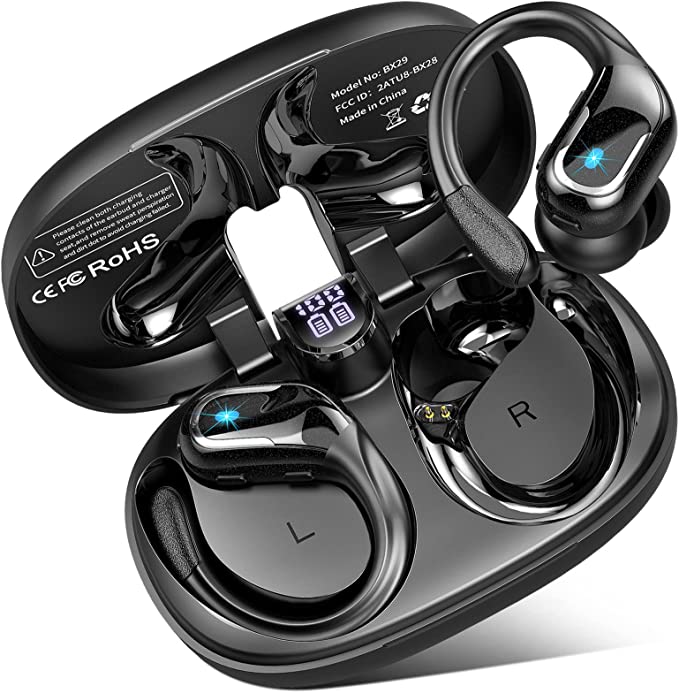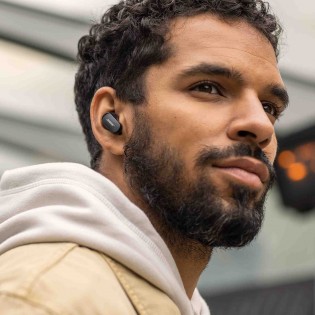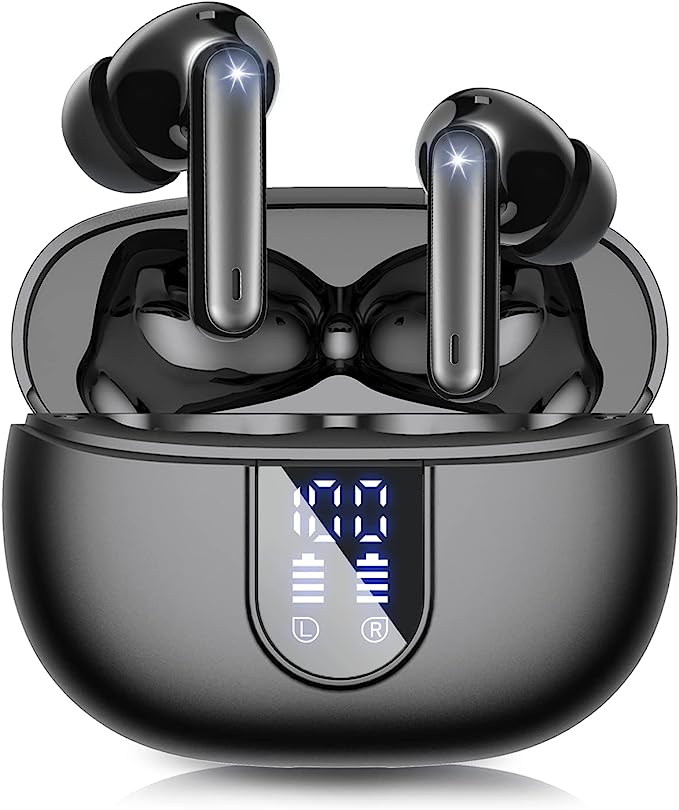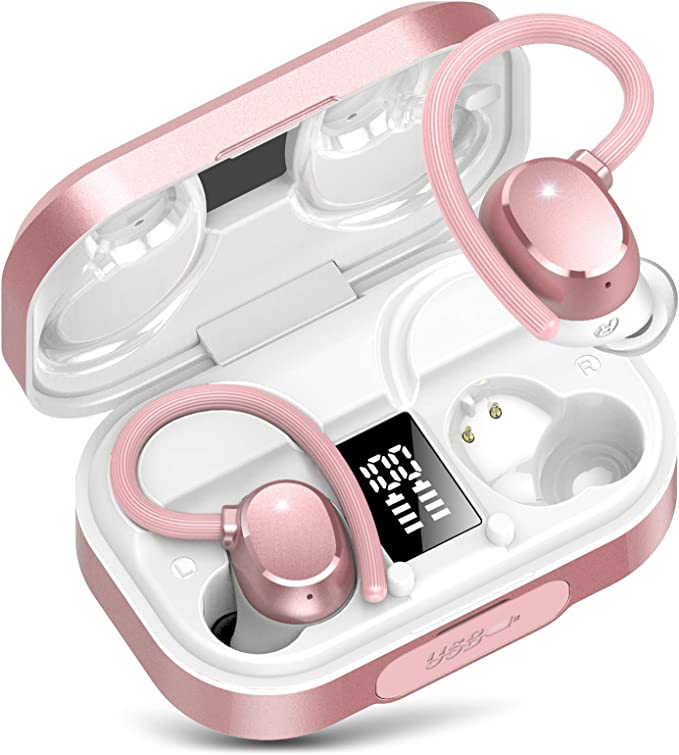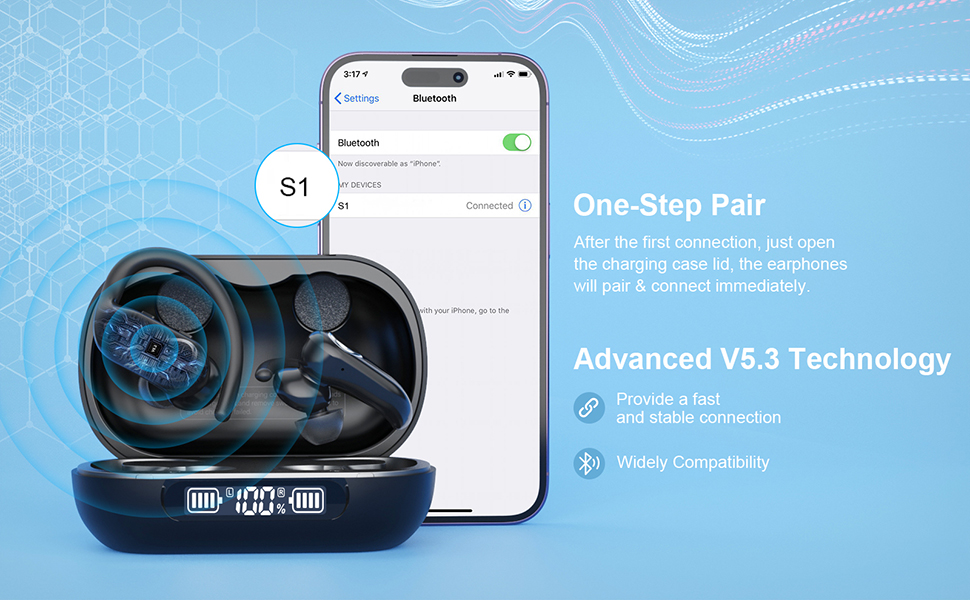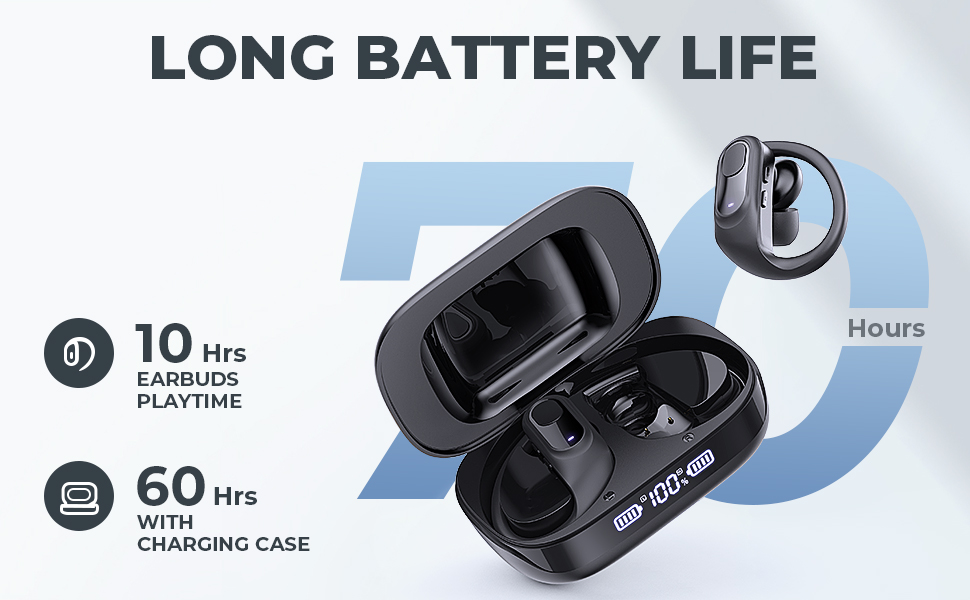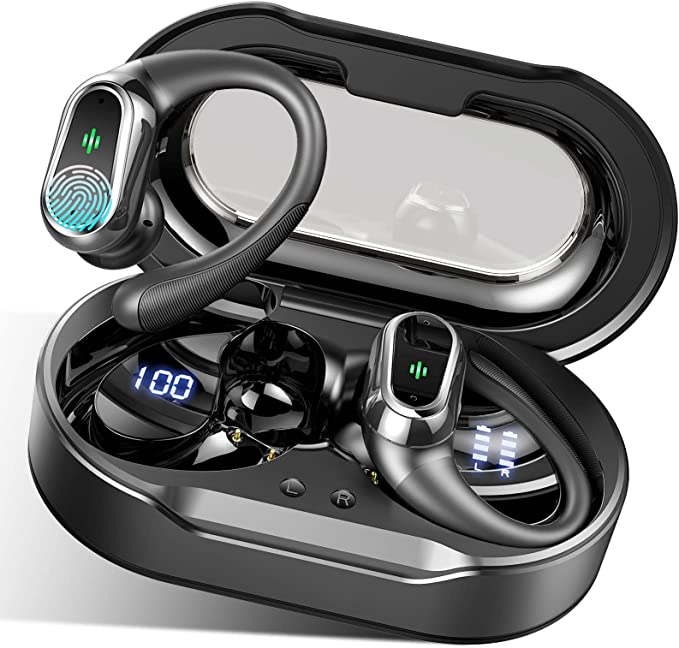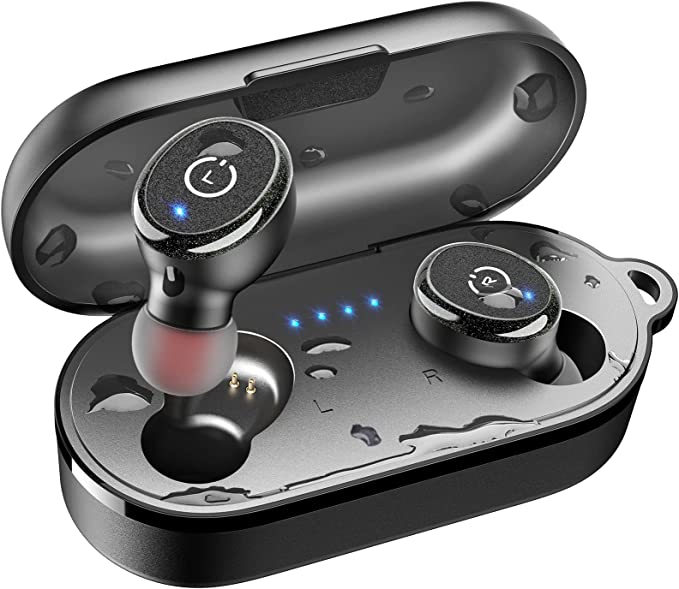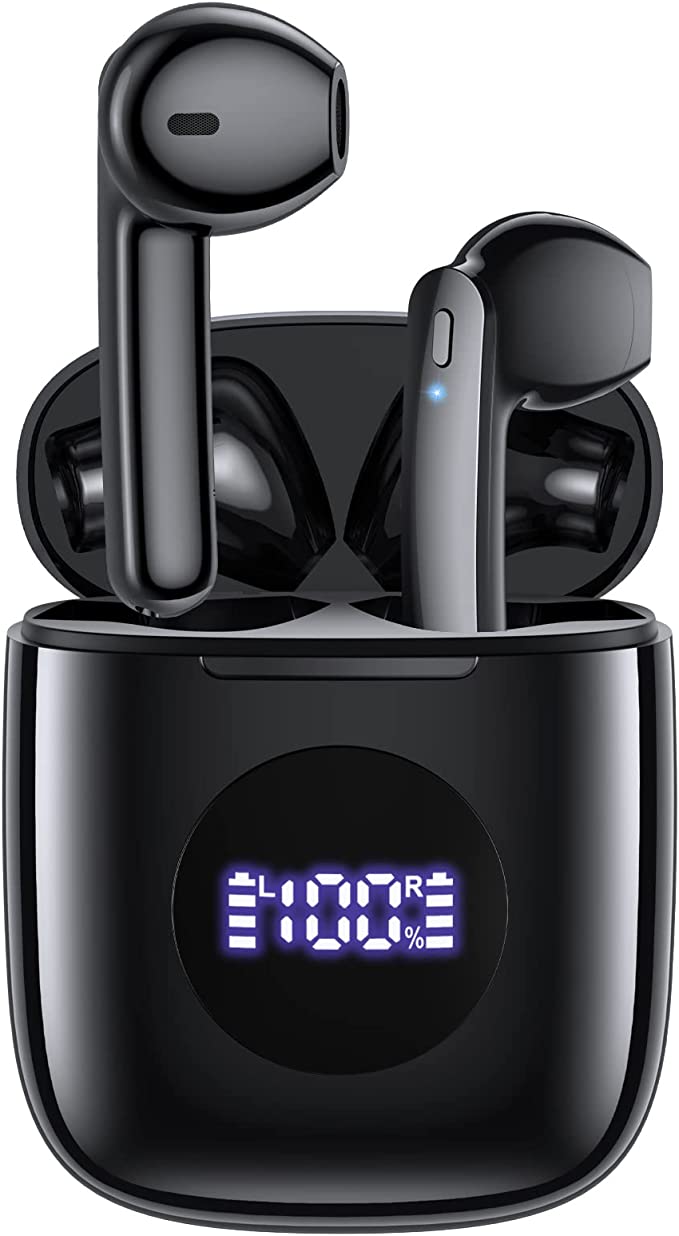TOZO Golden X1 Wireless Earbuds: Unleashing Hi-Fi Sound with Hybrid Driver Technology
Update on Feb. 19, 2025, 12:36 p.m.
The Allure of Sound: Why We Crave High-Quality Audio
From the gentle rustling of leaves to the soaring crescendo of an orchestra, sound is an integral part of the human experience. We are, by nature, auditory creatures. Our ears are incredibly sensitive instruments, capable of detecting a vast range of frequencies and intensities. And for many of us, the pursuit of high-quality audio is more than just a hobby; it’s a passion. We seek out experiences that allow us to fully appreciate the nuances and complexities of our favorite music, podcasts, and audiobooks. This is where wireless earbuds like the TOZO Golden X1 come in, promising to deliver an immersive and high-fidelity listening experience.

A World Without Wires: A Brief History and the Evolution
The first headphones can be traced back to the late 19th century, used by telephone operators. In 1910, Nathaniel Baldwin, often credited with inventing the first personal headphones, crafted them in his kitchen! These early headphones were far from the sleek, wireless devices we know today. They were bulky, uncomfortable, and primarily used for communication, not music enjoyment.
The real revolution in personal audio came with the invention of the transistor in the mid-20th century, paving the way for smaller, more portable devices. Stereo headphones emerged in the 1950s, and the Walkman, introduced by Sony in 1979, truly democratized personal music listening.
The rise of digital music and the advent of Bluetooth technology in the late 1990s ushered in the era of wireless audio. Early Bluetooth headphones were plagued by poor audio quality and unreliable connections. However, advancements in Bluetooth technology, along with improved audio codecs, have dramatically improved the wireless listening experience.

Decoding Sound: Understanding the Fundamentals
Before we delve into the specifics of the TOZO Golden X1, let’s take a moment to understand the basics of sound. Sound is essentially a vibration that travels through a medium, such as air, water, or solids. These vibrations are characterized by their:
- Frequency: The number of vibrations per second, measured in Hertz (Hz). Frequency determines the pitch of a sound. Higher frequencies correspond to higher pitches (like a whistle), while lower frequencies correspond to lower pitches (like a bass drum).
- Amplitude: The intensity or strength of the vibration. Amplitude determines the loudness of a sound. Larger amplitudes correspond to louder sounds.
The human ear can typically detect frequencies ranging from 20 Hz to 20,000 Hz (20 kHz). However, this range can vary depending on age and individual hearing health.

The Earbud Evolution: From Dynamic to Hybrid
Early headphones primarily used dynamic drivers, which operate like miniature loudspeakers. A diaphragm, attached to a voice coil, vibrates within a magnetic field, producing sound waves. Dynamic drivers are known for their robust bass response and relatively low cost.
Later, balanced armature drivers emerged, initially developed for hearing aids. These drivers use a tiny armature that pivots in a magnetic field, moving a small diaphragm. Balanced armature drivers excel at reproducing mid and high frequencies with exceptional detail and clarity, but they often struggle to deliver the same powerful bass as dynamic drivers.
The quest for the best of both worlds led to the development of hybrid driver systems, combining dynamic and balanced armature drivers within a single earbud. This allows for a wider frequency response and a more balanced sound signature.

Inside the TOZO Golden X1: A Deep Dive into Its Features
The TOZO Golden X1 is a prime example of how far wireless earbud technology has come. It boasts a range of features designed to deliver a superior listening experience. Let’s explore some of its key components:
Hybrid Harmony: Explaining Dynamic and Balanced Armature Drivers
At the heart of the TOZO Golden X1 lies its hybrid driver system. As we discussed, this combines the strengths of both dynamic and balanced armature drivers. The 12mm dynamic driver in the X1 is responsible for the low frequencies, providing that deep, resonant bass that gives music its foundation. Imagine the powerful thump of a kick drum or the rich rumble of a bass guitar – that’s the dynamic driver at work.
The customized balanced armature driver, on the other hand, handles the mid and high frequencies. This is where the clarity and detail come into play. Think of the crispness of a cymbal crash, the delicate vibrato of a violin, or the subtle nuances of a singer’s voice. The balanced armature driver ensures that these sounds are reproduced with accuracy and precision.
The combination of these two drivers allows the TOZO Golden X1 to deliver a full and balanced sound signature across the entire frequency spectrum. It’s like having a perfectly coordinated orchestra, with each instrument playing its part in perfect harmony.
LDAC: The Code to Lossless Audio
While the hybrid driver system provides the hardware foundation for great sound, the codec used to transmit audio wirelessly is equally important. The TOZO Golden X1 supports LDAC, a high-resolution audio codec developed by Sony.
Traditional Bluetooth codecs, like SBC, compress audio significantly to conserve bandwidth. This compression can result in a loss of detail and clarity. LDAC, however, uses a more efficient encoding scheme, allowing it to transmit up to three times more data than SBC. This means that more of the original audio information is preserved, resulting in a richer, more detailed sound.
To put it in perspective, imagine comparing a low-resolution JPEG image to a high-resolution RAW image. The JPEG might look fine at first glance, but when you zoom in, you’ll notice a loss of detail and sharpness. The RAW image, on the other hand, retains all the original information, allowing for greater flexibility in editing and a more visually stunning result. LDAC is like the RAW image of the audio world.
The TOZO Golden X1 is also Hi-Res Audio Wireless certificated by JAS, meeting the stringent standards for high-resolution audio playback.
To further illustrate the differences, here’s a simplified comparison:
| Codec | Max Bitrate (kbps) | Description |
|---|---|---|
| SBC | 328 | The standard Bluetooth codec, offering decent but compressed audio quality. |
| AAC | 250 | Commonly used by Apple devices, offering slightly better quality than SBC. |
| aptX | 384 | Developed by Qualcomm, offering improved quality and lower latency compared to SBC. |
| LDAC | 990 | Developed by Sony, offering the highest quality and supporting high-resolution audio transmission. |

Silence the Noise: The Science of Active Noise Cancellation
In our increasingly noisy world, the ability to block out distractions and immerse ourselves in sound is invaluable. The TOZO Golden X1 features Active Noise Cancellation (ANC) to achieve just that.
ANC technology works by using microphones to detect ambient noise. The earbuds then generate an “anti-noise” sound wave that is 180 degrees out of phase with the incoming noise. This effectively cancels out the unwanted sound, creating a quieter listening environment. Think of it like adding -1 to +1 – the result is zero.
The TOZO Golden X1 utilizes a six-microphone system and Environment Noise Cancellation (ENC) to further enhance the noise-canceling effect. The multiple microphones work together to accurately capture ambient noise from different directions, while ENC helps to reduce background noise during calls, ensuring clear communication. The result is noise reduction of up to 42dB, effectively silencing the outside world.

OrigX Pro Technology: Unveiling Frequencies
TOZO incorporates their proprietary OrigX Pro technology in the Golden X1. This enhances the earphones’ already impressive frequency range. OrigX Pro pushes the upper-frequency response to 44.1kHz, a specification that is used and tested at very high standard. It delivers a very high standard sound.

Beyond the Basics: Bluetooth 5.3, IPX6, and the TOZO App
The TOZO Golden X1 isn’t just about sound quality; it also offers a range of practical features:
- Bluetooth 5.3: This latest version of Bluetooth provides a more stable and reliable connection, with lower latency and improved power efficiency. This means fewer dropouts, smoother playback, and longer battery life.
- IPX6 Waterproof: The IPX6 rating means that the earbuds are resistant to sweat and rain, making them suitable for workouts and outdoor activities. You can confidently use them during intense exercise or even in a light shower without worrying about damage.
- TOZO App: The companion TOZO app offers a range of customization options. You can adjust the EQ settings to fine-tune the sound to your preferences, choosing from a variety of preset modes or creating your own custom EQ curve. The app also includes a hearing test feature, which analyzes your hearing sensitivity and adjusts the sound profile accordingly, compensating for any hearing deficiencies. This ensures a personalized listening experience tailored to your individual needs.

The Future of Sound: Emerging Trends in Wireless Audio
The TOZO Golden X1 represents the current state-of-the-art in wireless earbud technology, but the evolution of audio is far from over. We can expect to see even more exciting advancements in the years to come, including:
- True Lossless Wireless Audio: While LDAC offers near-lossless quality, true lossless wireless audio transmission remains a challenge. New codecs and wireless technologies are being developed to achieve this goal.
- Advanced Spatial Audio: Technologies like Dolby Atmos and spatial audio are creating more immersive and realistic listening experiences, simulating a three-dimensional soundstage.
- AI-Powered Sound Customization: Artificial intelligence is being used to personalize sound profiles based on individual hearing characteristics and listening preferences. Imagine earbuds that automatically adjust their EQ based on the type of music you’re listening to, or even your current mood!
- Improved Active Noise Cancellation: ANC technology is constantly evolving, with more sophisticated algorithms and microphone systems being developed to achieve even greater noise reduction. Future earbuds may even be able to selectively block out specific sounds, like a crying baby or a car horn, while letting others through.
- Extended Battery Life: Battery technology is a major focus of research, and we can expect to see wireless earbuds with significantly longer battery life in the future.
- Integration with Other Devices: Earbuds are becoming more than just listening devices. They’re increasingly integrating with smartphones, smartwatches, and other devices, offering features like voice control, fitness tracking, and even real-time translation.
- Biometric Sensors: Future earbuds may incorporate biometric sensors to monitor heart rate, body temperature, and other vital signs, turning them into powerful health and fitness tracking tools.

The TOZO Golden X1, with its hybrid driver system, LDAC support, advanced ANC, and customizable features, is a testament to how far wireless audio technology has come. It offers a glimpse into the future of personal listening, a future where high-fidelity sound is accessible to everyone, anytime, anywhere. These earbuds are more than just a convenient way to listen to music; they’re a gateway to a richer, more immersive auditory world. They demonstrate that the pursuit of perfect sound is an ongoing journey, one driven by innovation, engineering, and a deep appreciation for the power of audio. The convergence of these technologies promises an exciting future for audiophiles and casual listeners alike, offering a level of sonic fidelity and personalized control that was once unimaginable.
And as the technology continues to evolve, the experience is only going to get better, enriching lives, one song, one podcast, one phone call at a time. They are not only tools for consumption, they are for communication, entertainment, productivity, and more, they are a powerful extension of our digital lives.
